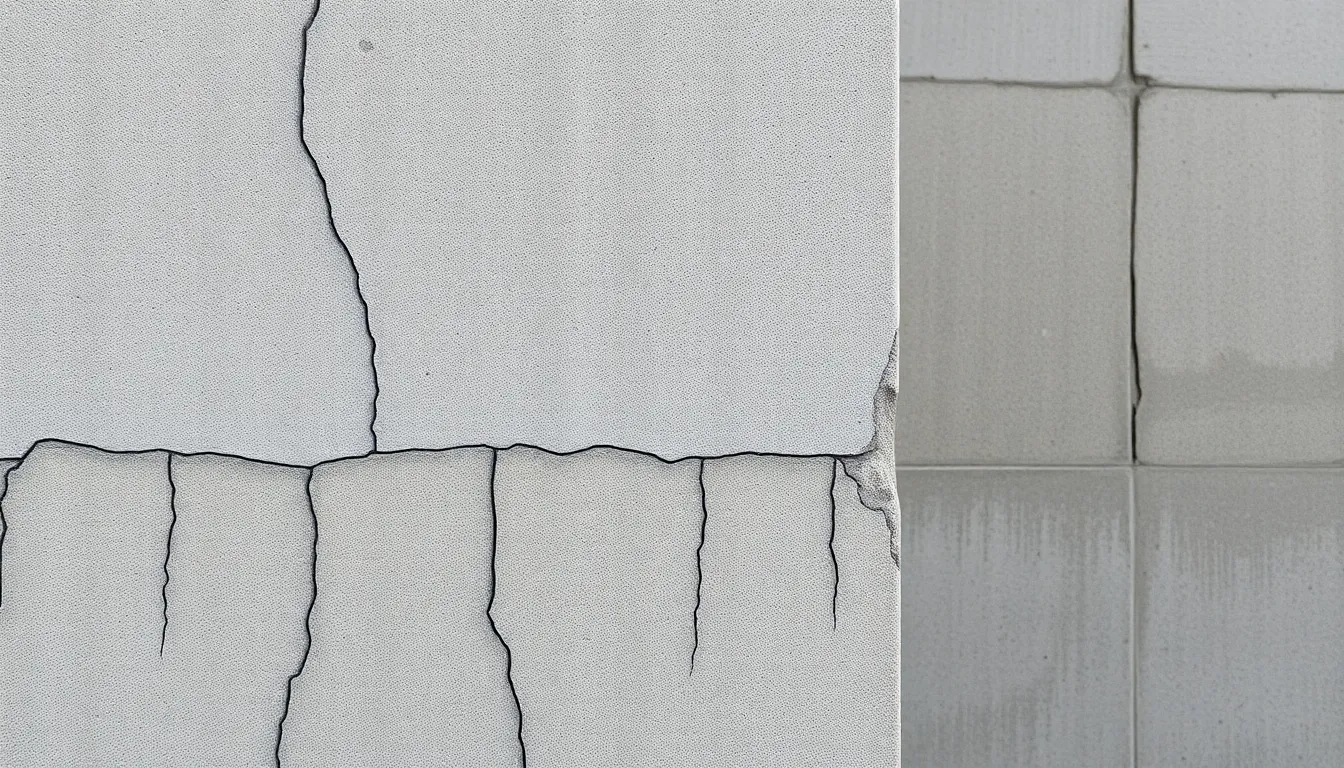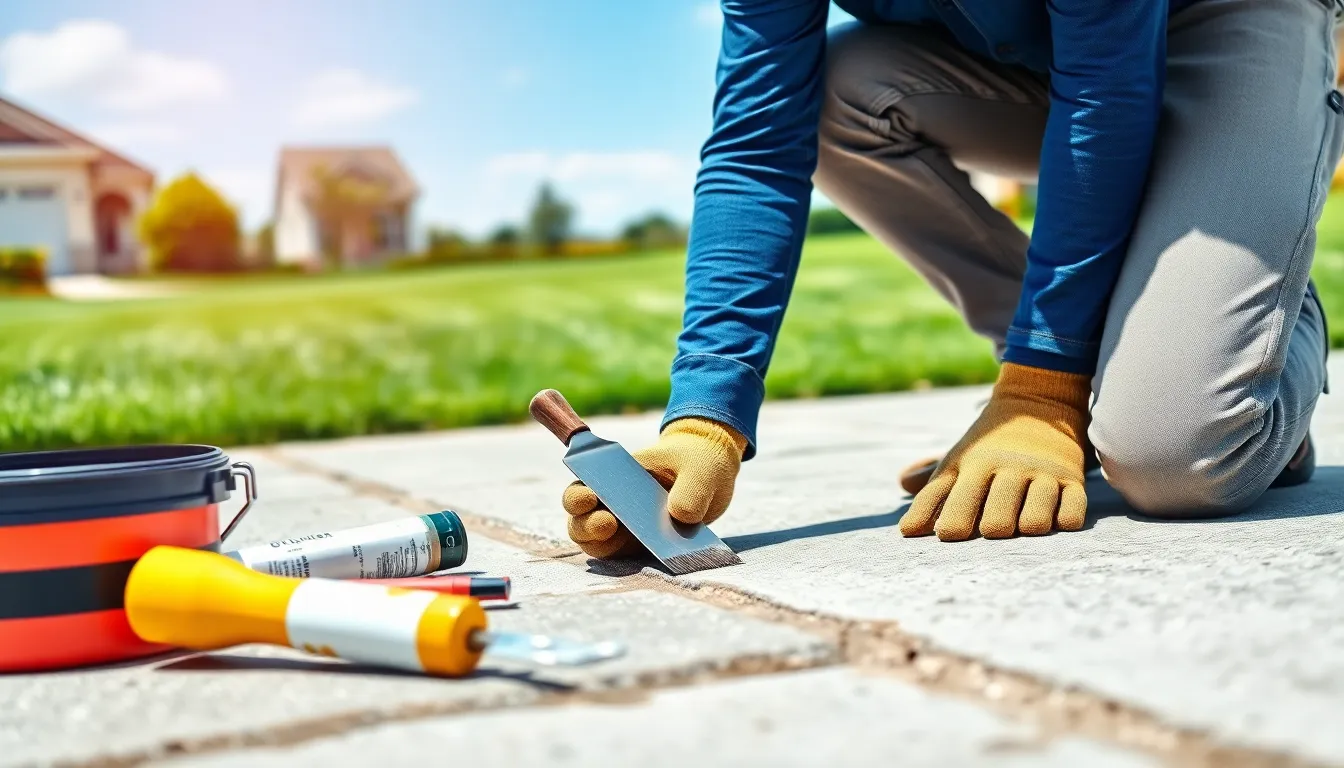Concrete might seem tough as nails, but even the strongest surfaces need a little TLC now and then. Cracks, stains, and wear can sneak up on anyone, turning a pristine driveway into a patchy mess faster than you can say “oops.” Luckily, concrete maintenance and repair isn’t just about fixing problems; it’s about preserving value and ensuring safety.
Table of Contents
ToggleImportance of Concrete Maintenance and Repair
Concrete surfaces require consistent maintenance and timely repairs to function effectively. Neglecting these aspects can lead to severe problems such as structural damage and safety hazards. Regular upkeep prevents minor issues from escalating into expensive repairs.
Safety is a key concern; damaged concrete can create slip and trip hazards, causing injuries. Ensuring a smooth and level surface minimizes these risks, making environments safer for pedestrians and vehicles alike.
Furthermore, maintaining concrete surfaces enhances aesthetic appeal. Well-kept concrete drives, walkways, and patios contribute to a property’s overall appearance, increasing curb appeal and market value. For instance, clean and sealed concrete resists stains, maintains color, and looks new longer.
Economic benefits come with proper maintenance as well. Addressing wear and tear promptly can extend the lifespan of concrete, delaying the need for full replacement. This not only saves money over time but also reduces environmental impact by minimizing waste.
Meeting maintenance goals helps avoid costly replacements, lowers repair expenses, and supports sustainability efforts. Regular inspections and maintenance schedules should be part of property management plans. By prioritizing concrete care, property owners protect their investment and ensure a durable, safe surface.
Investing time and resources in concrete maintenance leads to long-term savings and enhanced functionality. Engaging professionals for inspections and repairs guarantees quality work and effective solutions.
Common Issues in Concrete

Concrete surfaces can develop various issues over time, often due to environmental exposure and heavy usage. Addressing these problems promptly helps maintain structural integrity and aesthetic appeal.
Cracks
Cracks in concrete typically arise from temperature changes, shrinkage, or heavy loads. These fissures can range from hairline to wide gaps. Small cracks often indicate minor issues, while larger cracks may threaten structural stability. Repairing cracks promptly is essential to prevent moisture infiltration, which can exacerbate damage. Techniques like epoxy injection, sealing, or resurfacing provide effective solutions. Regular inspections can help identify cracks early, ensuring timely interventions.
Spalling
Spalling occurs when the concrete surface begins to flake or chip away, usually from freeze-thaw cycles or poor installation. This cosmetic defect not only diminishes appearance but also worsens over time if not addressed. Addressing spalling involves removing loose concrete and applying repair compounds or sealants to restore surface integrity. Consistent application of sealers also enhances durability against weather conditions. Early detection and repair can prolong the lifespan of the concrete.
Discoloration
Discoloration in concrete surfaces often results from exposure to chemicals, UV light, or uneven curing. Stains and fading may occur due to improper sealing or inadequate maintenance. To restore the original look, cleaning agents and sealers can rectify the color. Acid washing and pressure washing may effectively remove stubborn stains. Maintaining a regular cleaning schedule can prevent discoloration, preserving the surface’s appeal. Regular sealing safeguards against future discoloration from environmental factors.
Maintenance Techniques
Concrete maintenance involves various techniques that ensure long-lasting durability and aesthetics. Regular upkeep is essential to prevent costly repairs.
Regular Cleaning
Cleaning concrete surfaces removes dirt, grime, and stains. Use mild detergents and a pressure washer for effective results. Regular sweeping also helps eliminate debris that can cause wear. Attention to high-traffic areas prevents buildup and maintains an even surface appearance. Schedule cleaning sessions based on environmental conditions, such as rainfall or snow accumulation.
Sealant Application
Applying sealants protects concrete from moisture penetration and damage. Proper sealant type depends on the specific concrete use, whether indoor or outdoor. Apply sealants every 1 to 3 years, depending on the area’s exposure to elements. A thorough cleaning should precede sealant application to ensure adhesion. Sealants also enhance the surface’s appearance and make future maintenance easier.
Joint Repair
Joint repair addresses issues caused by movement and temperature changes. Inspect expansion joints regularly for damage or wear. Use a suitable filler for cracks and gaps to prevent water infiltration. Flexibility in materials allows for some movement while maintaining integrity. Timely joint repairs minimize further deterioration and preserve the structural integrity of concrete.
Repair Methods
Concrete repair involves various methods tailored to specific issues. Understanding these techniques ensures effective restoration.
Patch Repair
Patch repair addresses cracks and damaged areas by filling them with a specialized compound. This method involves cleaning the crack, applying a bonding agent, and carefully filling it with a concrete patching material. The goal is to create a seamless repair that blends with the surrounding surface. Professionals recommend using a patch that matches the original concrete for optimal results. Fast-setting materials often help minimize downtime, allowing surfaces to return to service quickly. Regular inspection of patched areas ensures they remain intact and don’t develop further damage.
Resurfacing
Resurfacing revitalizes worn or damaged concrete by applying a thin layer of new material. This technique enhances appearance and provides a protective barrier against weathering and staining. Before resurfacing, surfaces require thorough cleaning and preparation to ensure proper adhesion. An experienced contractor mixes resurfacer according to manufacturer specifications, ensuring consistency. Applying this material effectively covers minor imperfections and restores uniformity to the surface. Resurfaced concrete can maintain its durability for several years, with periodic resealing recommended to preserve its condition.
Mudjacking
Mudjacking effectively addresses sunken or unstable concrete surfaces. This method involves injecting a mixture of soil, cement, and other materials beneath the concrete slab to raise it back to its desired level. Professionals assess the extent of sinking before recommending mudjacking as a solution. Importantly, this technique prevents further settlement and improves structural stability. Homeowners can expect quick results compared to full slab replacement. Regular maintenance following mudjacking helps sustain the results and prolong the lifespan of the repaired concrete.
Effective concrete maintenance and repair is essential for preserving both the functionality and aesthetics of concrete surfaces. By addressing issues promptly and implementing regular maintenance practices, property owners can significantly extend the lifespan of their concrete. This proactive approach not only enhances safety but also contributes to the overall value of the property.
Investing in professional inspections and repairs ensures that concrete remains in optimal condition while minimizing long-term costs. With the right care and attention, concrete can continue to serve its purpose effectively, providing a durable and attractive foundation for any space. Prioritizing maintenance today leads to a more resilient tomorrow.



